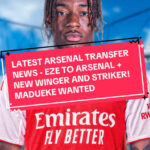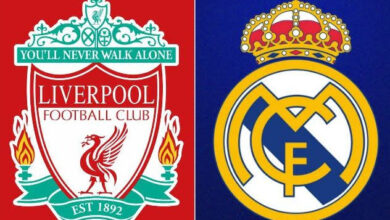Big summer’ – Arsenal have made ‘surprising’ Eberechi Eze decision

The summer transfer window of 2025 has been nothing short of extraordinary for Arsenal Football Club, with the Gunners demonstrating unprecedented ambition in the transfer market under Mikel Arteta’s stewardship. However, perhaps no single decision has raised as many eyebrows as their approach to securing Crystal Palace’s prized asset, Eberechi Eze. In what many consider a “surprising” strategic move, Arsenal have opted not to trigger the England international’s £68 million release clause, instead choosing to engage in protracted negotiations with Crystal Palace. This decision has sparked considerable debate among football analysts, with some questioning whether the Gunners are displaying shrewd financial acumen or potentially jeopardizing their chances of landing one of the Premier League’s most coveted talents.
At 27 years of age, Eberechi Eze has established himself as one of the most dynamic and versatile attacking players in English football. His journey to this pinnacle has been remarkable, transforming from a promising young talent to a player who has attracted the attention of Europe’s elite clubs. Last season’s statistics paint a picture of a player operating at the peak of his powers, with 14 goals and 11 assists across 43 appearances for Crystal Palace. These numbers, impressive as they are, only tell part of the story of Eze’s impact at Selhurst Park.
The England international’s ability to influence games from multiple positions has made him an invaluable asset for Crystal Palace. Whether deployed as an attacking midfielder, winger, or even in a more central role, Eze possesses the technical ability and vision to unlock the tightest of defenses. His dribbling skills, combined with an eye for goal and creative passing range, have made him a nightmare for opposition defenders to contain.
Perhaps the most defining moment of Eze’s recent career came in the FA Cup final against Manchester City, where he scored the winning goal that secured Crystal Palace’s first major trophy in decades. This strike not only demonstrated his ability to perform on the biggest stage but also highlighted his knack for decisive moments – a quality that top clubs like Arsenal desperately seek in their pursuit of silverware.
The versatility that Eze brings to any squad cannot be overstated. In modern football, where tactical flexibility and squad rotation are paramount, players who can seamlessly transition between multiple positions are worth their weight in gold. Eze’s capacity to play across the attacking third, combined with his work rate and defensive contribution, makes him an ideal fit for Arteta’s tactical philosophy at Arsenal
To understand Arsenal’s approach to the Eze transfer, one must first examine the broader context of their summer activities. The Gunners have embarked on what can only be described as a transformative recruitment drive, investing approximately £200 million in new talent. This substantial outlay represents a clear statement of intent from the club’s hierarchy, demonstrating their commitment to providing Mikel Arteta with the tools necessary to compete at the highest level.
The acquisition of Kepa Arrizabalaga addresses a long-standing concern in goal, providing competition and depth behind the existing goalkeeping options. The Spanish international brings Champions League experience and proven quality, having previously starred for Chelsea and Real Madrid. His addition signals Arsenal’s intention to strengthen from the back, building a solid foundation for their title aspirations.
Martin Zubimendi’s arrival from Real Sociedad represents perhaps the most significant coup of Arsenal’s summer business. The Spanish midfielder has been widely regarded as one of Europe’s most promising defensive midfielders, combining exceptional technical ability with tactical intelligence. His signing addresses a crucial need in Arsenal’s squad, providing the kind of press-resistant midfielder who can dictate tempo and shield the defense effectively.
Christian Norgaard’s move from Brentford adds physicality and aerial presence to Arsenal’s midfield options. The Danish international’s success in the Premier League with Brentford demonstrated his ability to adapt to English football’s demands, making him a low-risk addition who can provide valuable depth and different tactical options.
The signing of Cristhian Mosquera from Valencia represents a significant investment in defensive potential. The young Spanish center-back is considered one of Europe’s most promising defensive talents, capable of playing multiple positions across the backline. His addition provides both immediate quality and long-term value, fitting Arsenal’s strategy of combining established talent with promising youth.
Viktor Gyokeres’ arrival from Sporting Lisbon has perhaps generated the most excitement among Arsenal supporters. The Swedish striker’s prolific goalscoring record in Portugal, combined with his physical attributes and work rate, makes him an ideal fit for the Premier League. His signing addresses Arsenal’s need for a clinical finisher who can operate effectively in various tactical systems.
Finally, the addition of Noni Madueke from Chelsea adds pace and directness to Arsenal’s attacking options. The English winger’s ability to beat defenders one-on-one and create chances from wide positions provides Arteta with additional tactical flexibility in the final third
The decision not to trigger Eze’s £68 million release clause has been characterized as “surprising” by football finance expert Stefan Borson, and for good reason. Release clauses exist primarily to provide certainty and expedite transfers, removing the need for prolonged negotiations and potential complications. By allowing this clause to expire on August 1st, Arsenal have arguably placed themselves in a more precarious negotiating position.
From a strategic standpoint, release clauses offer several advantages to the purchasing club. They eliminate uncertainty regarding the fee, prevent bidding wars with other interested parties, and provide a clear timeline for completing the transfer. By not activating Eze’s clause, Arsenal have potentially opened the door for other clubs to enter the race and complicate their pursuit of the player.
However, Arsenal’s decision may also reflect a calculated risk based on their assessment of the market dynamics. The club’s hierarchy may believe that Crystal Palace, despite their historical reluctance to accept reduced offers, might be willing to negotiate below the release clause figure. This approach could potentially save Arsenal millions, which could then be redirected toward other transfer targets or retained for future windows.
Stefan Borson’s analysis of the situation provides valuable insight into the complexities of modern transfer negotiations. His observation that Crystal Palace has “a history of not taking these sorts of offers” highlights the inherent risk in Arsenal’s approach. Palace’s track record suggests they are unlikely to accept significantly less than their valuation, making Arsenal’s gamble potentially counterproductive.
The timing of this decision is particularly intriguing given Arsenal’s substantial summer expenditure. With close to £200 million already invested in new talent, the club may be approaching their financial limits for the current window. This constraint could explain their reluctance to commit an additional £68 million to the Eze transfer, instead hoping to secure his services at a reduced fee through negotiation.
Crystal Palace find themselves in an enviable position regarding the Eze transfer saga. With the release clause having expired, they now hold significantly more leverage in any potential negotiations. The club’s history of driving hard bargains, particularly when it comes to their prized assets, suggests they will not be easily swayed by offers below their valuation.
Palace’s strategy in recent years has demonstrated their willingness to retain key players rather than accept suboptimal fees. This approach has generally served them well, allowing them to extract maximum value when they do eventually sell their stars. In Eze’s case, the club is likely to demand a fee close to the expired release clause, if not the full amount.
The FA Cup triumph has only strengthened Palace’s negotiating position. Eze’s match-winning performance in the final elevated his profile and market value, providing Palace with additional justification for maintaining their asking price. The club can legitimately argue that they possess a proven match-winner whose value has only increased since the release clause was initially set.
Furthermore, Palace’s lack of immediate financial pressure to sell strengthens their hand considerably. Unlike clubs facing financial difficulties or those needing to comply with Financial Fair Play regulations, Palace can afford to be patient and wait for their valuation to be met. This luxury allows them to play hardball in negotiations, knowing that Eze remains a valuable asset regardless of whether a transfer materializes.
The club’s American ownership group has also demonstrated their commitment to retaining key players and building a competitive squad. Their investment in the club’s infrastructure and playing personnel suggests they are not motivated purely by short-term financial gain, further strengthening their negotiating position
Arsenal’s approach to the Eze transfer may also be influenced by Financial Fair Play (FFP) considerations. With the Premier League’s sustainability rules becoming increasingly stringent, clubs must carefully balance their spending with revenue generation. Arsenal’s significant summer expenditure may have pushed them close to their allowable limits, necessitating a more cautious approach to additional transfers.
The club’s revenue streams, while substantial, must support not only transfer fees but also the associated wage commitments. Each new signing represents not just an initial investment but an ongoing financial obligation that must be factored into long-term planning. Arsenal’s decision to negotiate rather than tr














